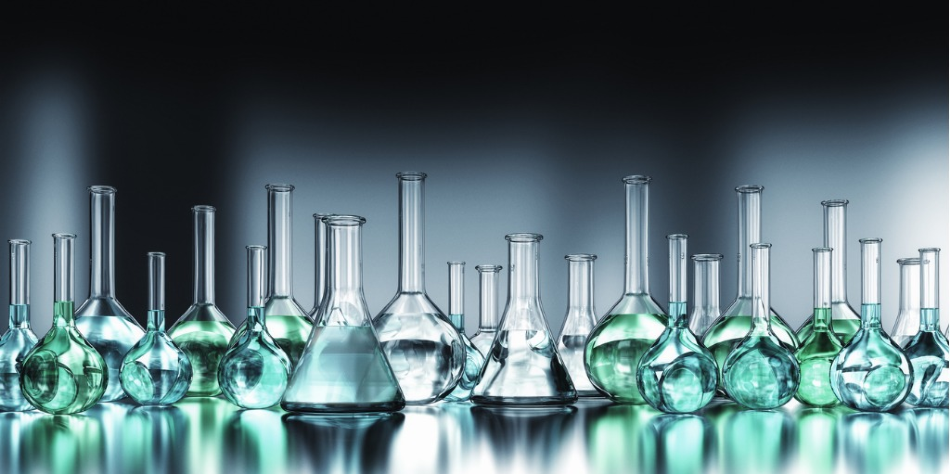The properties of silicate and borate glass can be fine-tuned using glass modifiers such as lithium oxide, calcium oxide, and zinc oxide to meet several niche engineering applications. This article examines how high-specification glasses are created for numerous applications using common glass modifiers.

Image Credit: Mo-Sci
Ordinary glass is heat-resistant, exhibits low thermal expansion, and offers very good thermal shock resistance. It is chemically durable, exhibits high electrical resistivity, and is optically transparent. All of these properties make glass a unique material that is essential in architecture, labware, electronics, and engineering.
Glass modifiers can further transform glass into a true wonder-material. The properties of glass can be precisely tuned and augmented, just as with other materials such as steel, by carefully adding chemical modifiers to meet a large range of demanding applications.
Glass Structure and Composition
There are three broad categories for the constituents of glass: network formers, modifiers, and intermediates.1 With network formers, the bulk of the glass is made up of a highly cross-linked network of chemical bonds. The most common network-forming constitute of glass is silicon oxide. Two other commonly used oxides in the production of glass are boron and germanium.
To further alter the properties of glass, chemical modifiers, including lithium, sodium, potassium, and calcium, can be added to glass in small quantities. These modifiers exist as charged single atoms (ions) amongst the cross-linked network formers. As such, they reduce the relative number of strong bonds in the glass and, in turn, lower the melting point and viscosity.
Dependent on the glass composition, intermediates, including titanium, aluminum, and zinc, are chemicals that can behave as network-formers or modifiers.2 A carefully tuned balance of network formers, intermediates, and modifiers are required to prevent the formation of ordered crystallites within the material as glasses are naturally highly disordered.
Effects of Glass Modifiers
Additivity relationships approximately describe the properties of modified glass as glass generally acts like a solution, meaning that each ingredient contributes to the bulk properties of the glass by an amount roughly proportional to its concentration.3
The normal bonding between glass-forming elements and oxygen is interrupted by glass modifiers as they are loosely bonding with the oxygen atoms. “Non-bridging oxygens” are created, which then lowers the relative amount of strong bonding within the glass. This means that glass modifiers typically have significant effects on glass properties.
Such effects include a reduction in melting point, surface tension, and viscosity as a result of weaker overall bonding within the material.4 Glass modifiers affect the coefficient of thermal expansion, chemical durability, and the refractive index, making glass easier to work with at lower temperatures with no impact on transparency.
Glass Modifiers for High-Specification Applications
The various available glass modifiers have several common properties. However, the unique chemical properties of each can have varying effects on the properties of the produced glass.
Chemical Durability
The chemical durability of glass is typically reduced when metals, for example, sodium and potassium, are used as modifiers. In contrast, the chemical durability of glass can increase when alkaline earth metals, for example, calcium, are used.5
Resistivity
Glass has high resistivity and permittivity, which lends it to applications in resistors and capacitors. Resistivity in glasses can be dramatically increased through the addition of tellurium, germanium or titanium oxides in low concentrations. This makes them attractive glass modifiers for ultra-high resistance applications, for example, hearing aids and infrared detectors.6
Glass for Labware
In labware manufacturing, glass with strong chemical durability and resistance to thermal shock is highly valued. Thermal expansion effects can be reduced through the addition of zinc oxide to silicate glass. This makes it particularly resistant to thermal shock.
Glasses that use borate as well as silicate as a network former, known as borosilicate glasses, are also particularly thermally resistant and chemically durable. This makes them an attractive material for reaction vessels, test tubes, and other labware.
Specialty Optical Properties
Several glasses are prized for their unusual optical characteristics. Photochromic lenses widely use zinc-modified glass, while the photosensitive glass is produced using silver, gold, and copper and can change color in response to incident light.4,7
Bioactive Glass
The biomedical community is particularly interested in the form of modified glass that closely emulates the properties of the mineral portion of living bone. This is known as bioactive glass. It is highly biocompatible and forms strong chemical bonds with bone.
Calcium and sodium act as the primary modifiers to create a comparatively soft glass consisting of around 45% silicate. Such glass can be readily machined into implants for use in the repair of bone injuries.8
Mo-Sci Leading Precision Glass Technology
A world-leader in precision glass technology, Mo-Sci produces a wide variety of high-specification glasses for application in healthcare, electronics, and engineering. Their expertise includes bioactive glass, high refractive index glass, and fluorescent glass. Custom solutions can be produced for virtually any glass application by Mo-Sci.
References and Further Reading
- Karmakar, B., Rademann, K. & Stepanov, A. L. Glass nanocomposites: synthesis, properties, and applications.
- Kienzler, B. Radionuclide source term for HLW glass, spent nuclear fuel, and compacted hulls and end pieces (CSD-C waste). (KIT Scientific Publishing, 2012).
- Industrial glass | Britannica.com. Available at: https://www.britannica.com/science/industrial-glass. (Accessed: 17th May 2019)
- Phillips, G. C. A Concise Introduction to Ceramics. (Springer Netherlands, 1991). doi:10.1007/978-94-011-6973-8
- Hu, J. MIT 3.071 Amorphous Materials 2: Classes of Amorphous Materials. https://ocw.mit.edu/courses/materials-science-and-engineering/3-071-amorphous-materials-fall-2015/lecture-notes/MIT3_071F15_Lecture2.pdf
- Weißmann, R. & Chong, W. Glasses for High-Resistivity Thick-Film Resistors. Adv. Eng. Mater. 2 , 359–362 (2000).
- Photosensitive glass. (1948). https://patents.google.com/patent/US2515275
- Rahaman, MN et al. Bioactive glass in tissue engineering. Acta Biomater. 7 , 2355–2373 (2011).

This information has been sourced, reviewed and adapted from materials provided by Mo-Sci Corp.
For more information on this source, please visit Mo-Sci Corp.